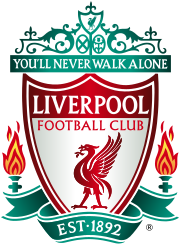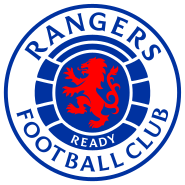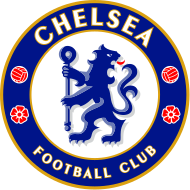Article body analysed
EPL PL Talking Points Jurgen Klopp spoke of wanting to win titles with “a team full of Scousers”. Eddie Howe described the Geordies in his Newcastle United side as “very special… they bring a uniqueness about them”. “He’s one of our own, ” sing dozens of fanbases around the country. Yet that number is beginning to shrink. On Sunday, the first Manchester derby of the season takes place. Manchester City have local players — including Phil Foden, Nico O’Reilly and Rico Lewis — but with Kobbie Mainoo out of favour, Manchester United’s starting XI is unlikely to contain a Mancunian. Advertisement After profit and sustainability rules influenced the sale of Jacob Ramsey to Newcastle United, Aston Villa have no local first-team players. The same goes for Leeds United on their return to the Premier League, having sold Archie Gray to Tottenham Hotspur last summer, and with 16-year-old brother Harry not yet in the senior squad. Wolverhampton Wanderers and Burnley are in the same position. Four historic clubs finding themselves in this position speaks to a wider theme — the number of local players is diminishing. Feelings are often more enticing than facts, but the statistics bear this out, too. Let’s go back 30 years, to the 1995-96 season. Defining “local” liberally as having been brought up in the same city, county, or within roughly a 45-minute drive (generally, if a case was borderline, The Athletic opted to classify them as local), Premier League clubs had an average of 6. 5 local players in their sides. Wimbledon had 16 Londoners in their team, and Tottenham Hotspur and Chelsea both possessed notable local contingents. Those days are now long in the past — and looking at 1995-96 is appropriate. It was in December 1995 that the Bosman ruling landed, abolishing quotas limits on the number of European Union players allowed in a team. Numbers of local players rapidly fell. By 2010-11 (roughly one generation of players later on), there were 3. 7 locals per team. Manchester City and Bolton Wanderers had none at all. And now, at the outset of 2025-26, Premier League teams possess an average of just 2. 7 locals per team. While Villa, Leeds, Wolves and Burnley have none, three more teams — Nottingham Forest, Liverpool, and Bournemouth have just one. This matters to people. Research from the English Football League, which governs the second to fourth tiers of the pyramid, found that 89 per cent of fans believed their club was important to the social fabric of the town or city. Local players the most visible representatives. In 2017, the Football Supporters Association showed that 78 per cent of fans felt it was important that they were represented by local players. Advertisement Last year, in a survey carried out by Sheffield Hallam University, fans from 64 English clubs were asked to indicate how strongly they agreed with various statements on a scale of one to five. The statement that achieved the most assent, with a score of 4. 74 out of 5, was, “I am proud when a local player from ‘our’ academy makes it to the first team”. It outscored, “I am proud when a player from ‘our’ academy makes it to the first team”. Respondents overwhelmingly stated they were prouder when local players made their debuts compared to non-local players. These findings are borne out by individual cases. For Newcastle fans, it was important that Blyth-born Dan Burn scored the opening goal in last season’s Carabao Cup final; for Crystal Palace supporters, it was all the sweeter that south Londoner Eberechi Eze scored the winner in the FA Cup final three months later. Things work the other way as well — it was more difficult for Liverpool supporters to accept Trent Alexander-Arnold’s departure to Real Madrid because he was a Liverpudlian. And so — why are local players slowly disappearing? Despite the far higher numbers, it still was not the case that local players were dominating decades ago. Liverpool’s European Cup-winning squad in 1983-84, for example, contained just one Scouser, Sammy Lee. In general, however, teams were quickly affected by the Bosman ruling, which rapidly diversified their squad with international imports. The timing of the ruling, coming soon after revenues soared in 1992 thanks to Sky’s television money, also fired investment. By 2006, just 11 years post-Bosman, UEFA was sufficiently concerned to introduce a 'homegrown' rule requiring a set number of domestically trained players in any squad competing in European competition. The Premier League introduced its own version in 2010. Advertisement But over recent years, a new source of blame has been identified — a three-letter acronym whose plosive opening lends itself to being spat out by irate supporters — PSR. In recent seasons, several high-profile cases have prompted the sales of local players. Why? Since they were not purchased from other clubs, they arrived for no transfer fee — and as such, their sale can be booked as ‘pure profit’. In the last 18 months alone, Chelsea’s Conor Gallagher, Newcastle’s Elliot Anderson, and Villa’s Ramsey have departed their boyhood clubs for more than £110m combined. “Do I really have to go? ” Anderson asked, when told by Howe that he needed to leave. It was explained to him that by departing, Anderson would help save his boyhood club. “No one can jump over the 'Big Six' and their revenues, “ one sporting director told The Athletic last week. "Maybe it is involuntary, but it’s forcing clubs to sell their best young players. “They were always the jewel in the crown as they were providing clubs with a sense of belonging. That tradition is now at risk. ” Not all the blame can be left at PSR’s door. Manchester City are a prime example of the many teams selling local players because they have failed to break into the starting XI. Local players such as Cole Palmer, James Mc Atee, Taylor Harwood-Bellis, and James Trafford, who later rejoined City, were all sold at big prices to fund senior acquisitions for Pep Guardiola's side. Even with Gallagher, Anderson, and Ramsey, there are mitigating circumstances. While, in an ideal world, all three would have been kept, they were, to varying extents, seen as expendable by their clubs. Gallagher was considered unsuited to Enzo Maresca’s preferred style of play. Ramsey had fallen behind Morgan Rogers in the pecking order. Newcastle rated Anderson extremely highly, but he was still the fourth- or fifth-choice midfielder at the club. Advertisement Despite the noise, there has not been an example of PSR forcing a club to sell a player that they were absolutely desperate to keep, with Anderson coming closest. Instead, another factor decreasing the proportion of local players is increasingly club-driven — the battle to sign academy prospects at ever younger ages. In the past 12 months, several high-profile debuts have been made by young players — Trey Nyoni and Rio Ngumoha at Liverpool, Chido Obi and Ayden Heaven at Manchester United, Shim Mheuka at Chelsea. Yet each of these five arrived from other clubs. Nyoni was signed from Leicester City in 2023, Heaven and Obi arrived from Arsenal last season, while Mheuka joined alongside fellow Brighton & Hove Albion prospect Zak Sturge in 2022. Ngumoha, meanwhile, was one of the most in-demand teenagers in British football history, and Liverpool tempted him away from Chelsea with the promise of a better pathway to first-team football. Chelsea were so disappointed to lose a player who had been with them since the under-eights that they temporarily banned some opposition scouts from attending games. Last season, Chelsea signed 14-year-midfielder Isaac Mc Gillvary, the son of former England rugby league winger Jermaine Mc Gillvary, from Manchester City, who struck back by tempting 15-year-old Ryan Macedo away from Cobham. These signings might be most common at ‘Big Six’ clubs, with the most resources at academy level, but several other clubs have begun to adopt it as a priority strategy. Newcastle, for example, having seen under-investment in their youth programme under Mike Ashley, have become particularly aggressive in signing teenagers for their senior academy. Over the past two years alone, these include Trevan Sanusi (signed from Birmingham City), Isaac Moran (Liverpool), Oliver Goodbrand and Alfie Hutchison (both Rangers), Alfie Harrison (Manchester City), Jayden Kouossu and Muawiya Ghanem (both West Bromwich Albion), Rory Finneran (Blackburn Rovers), Aaron Epia (Everton), CJ Afumuzor (Portsmouth), and Ezra Tika-Lemba (West Ham United). Advertisement There are several more — but that is a squad of 11 players. Other clubs — Everton, Brighton, and Aston Villa — have all spoken publicly of similar strategies. These clubs may well produce more academy prospects than ever before. But that comes with a flipside — they are also far less likely to produce local players. In number terms, it appears far more influential in inhibiting local players than PSR transfers. To succeed at Newcastle, a young forward must be more than the best prospect in the north east. They must be the best in the United Kingdom, or even wider. Newcastle’s latest local prospect, Sean Neave, faces a battle with Georgian forward Vakhtang Salia, signed from Dinamo Tbilisi in January. They are both 18. Competition is necessary and important — if a player is to have a successful first-team career, they will need to overcome these challenges. But at the same time, this is also an opportunity game where clubs’ self-scouting is not always perfect — if given a couple of extra senior chances, who knows how a local prospect may surprise. How have we got here? Homegrown rules that only refer to domestic training, rather than local training, undoubtedly have some impact. But it is also a battle over what local identity means. Do communities derive their pride in their town from winning alone? Or is it more nuanced, a balance between results and seeing themselves represented on the pitch? Sporting directors and coaches, making decisions for their jobs, are unlikely to choose the second. But as Premier League sides increasingly focus on marginal gains for younger and younger footballers, it feels as if something is being lost. (Top photos: Getty Images) Spot the pattern. Connect the terms Find the hidden link between sports terms Play today's puzzle Jacob Whitehead is a reporter for The Athletic who covers investigations, cycling, and Newcastle United. He previously worked on the news desk. In 2025, he was a Gold Award winner at the 30 to Watch journalism awards. Follow Jacob on Twitter @jwhitey98


